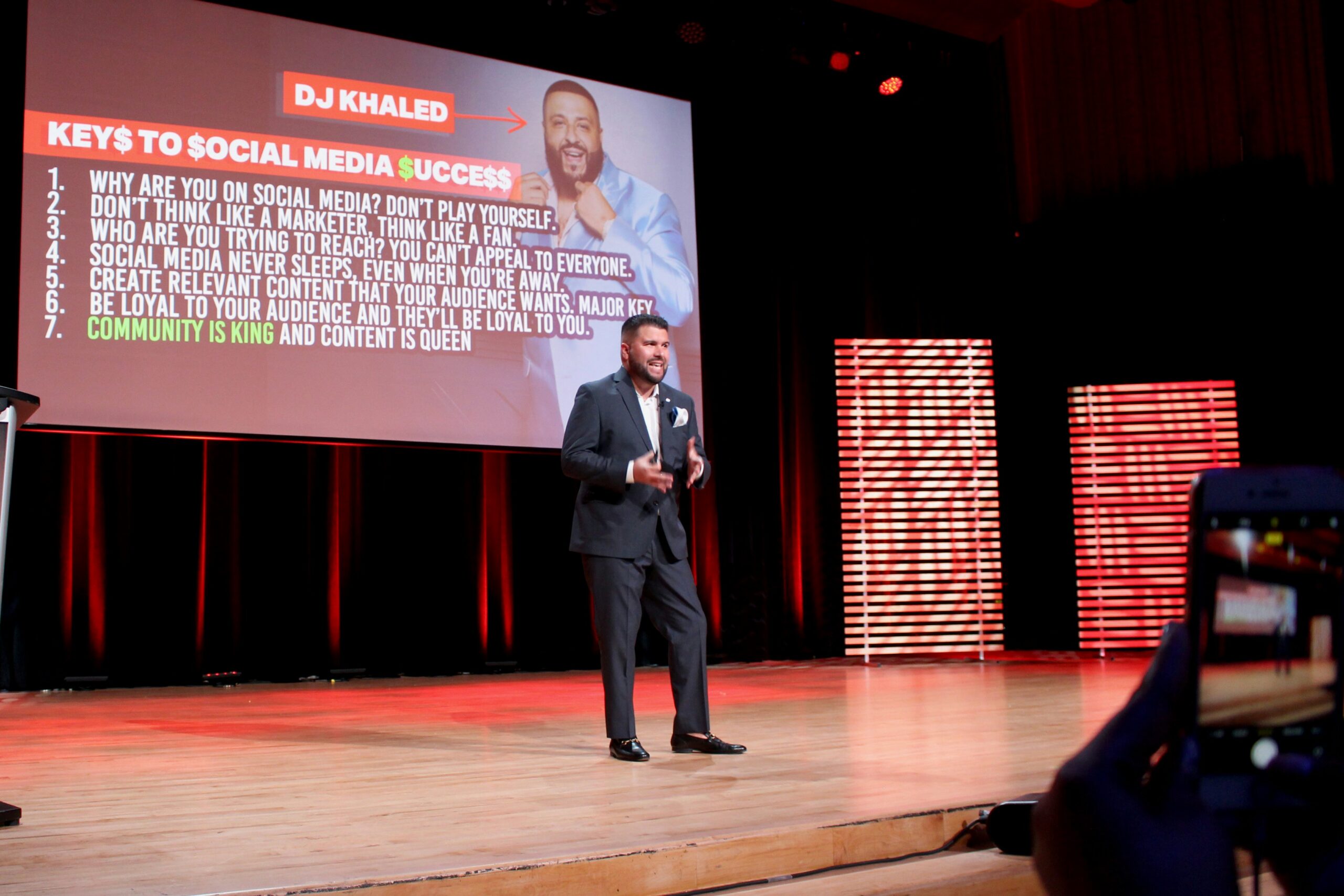Harnessing the Power of Social Listening for Real-Time Campaign Optimization
September 2, 2025 | by qqvmedia.com


Understanding Social Listening: Definition and Importance
Social listening is a strategic practice that involves monitoring and analyzing conversations taking place across various social media platforms. It goes beyond simple surveillance of social engagement; it incorporates the evaluation of sentiments, trends, and the broader conversations impacting public perception. By understanding social listening, businesses can gain insights into customer preferences and behaviors, thus enhancing their marketing initiatives.
In the dynamic digital landscape, where information spreads rapidly, the significance of social listening cannot be overstated. Organizations can tap into real-time data that reveals what their target audience thinks and feels about their brands, products, or services. This process enables businesses to identify emerging topics of interest and gauge public sentiment towards specific campaigns or initiatives. By listening closely to their audience, brands can engage more effectively, adapting their strategies based on direct feedback.
Furthermore, social listening allows businesses to monitor their competitors. By analyzing competitor conversations and customer sentiments toward rival offerings, companies can develop strategies that set them apart in the marketplace. Insight into competitors’ strengths and weaknesses leads to more informed decision-making, allowing businesses to capitalize on market gaps and unveil unique selling propositions.
The evolving nature of consumer behavior emphasizes the need for brands to operate with a responsive marketing approach. Social listening tools provide essential data, enabling businesses to adjust their campaigns swiftly and effectively according to audience sentiments. This adaptability fosters a more authentic connection with target demographics, thereby enhancing brand loyalty.
In summary, social listening is an invaluable resource for businesses seeking to understand their market. The insights gained through effective social listening can shape strategies that lead to significant competitive advantages in today’s fast-paced digital environment, ensuring brands remain relevant and responsive to consumer needs.
Implementing Social Listening Tools: Strategies and Best Practices
In the realm of digital marketing, social listening tools play a crucial role in understanding public sentiment and optimizing campaigns in real-time. When selecting a tool, it is essential to consider features such as sentiment analysis, keyword tracking, and engagement metrics. These elements provide invaluable insights into the perceptions surrounding a brand and its competitors, facilitating more informed decision-making.
Sentiment analysis helps marketers gauge the emotions associated with mentions of their brand across social media platforms. By assessing whether the sentiment is positive, negative, or neutral, businesses can adapt their campaign strategies accordingly, addressing any concerns or leveraging positive feedback more effectively. Additionally, keyword tracking enables the identification of relevant conversations and trends, allowing teams to pivot their messaging around popular or topical themes, thereby enhancing engagement.
When implementing social listening tools, establishing clear objectives is paramount. Marketers should outline their goals, whether they seek to measure brand reputation, identify influencers, or monitor campaign performance. Setting up alerts is also vital; these notifications can inform teams of brand mentions in real-time, fostering timely responses and proactive engagement with the audience.
Moreover, tracking brand mentions provides an opportunity to gauge the effectiveness of marketing efforts. By analyzing mentions and engagement metrics, businesses can refine their content strategy and improve audience targeting. Studying competitor activity is another best practice; by observing what resonates with the audience in the competition, brands can uncover new opportunities or threats in their market space. In conclusion, implementing social listening tools effectively can significantly enhance a brand’s ability to adapt to changing market dynamics, ensuring campaigns are continuously optimized for success.
Real-Time Insights: Adapting Campaigns Based on Social Listening Data
In the rapidly evolving landscape of digital marketing, the ability to adapt campaigns based on real-time insights is crucial. Businesses leverage social listening data to gain a profound understanding of audience behavior, preferences, and emerging trends. By analyzing conversations, sentiments, and engagement patterns across various social media platforms, brands can tailor their messaging and content instantly, enhancing their relevance and effectiveness.
One of the standout benefits of utilizing real-time insights is the agility it provides marketers. For instance, a well-known sportswear brand recently monitored social media chatter around a high-profile athlete’s performance. When the athlete experienced a setback, the company quickly pivoted its campaign narrative from celebrating victories to focusing on resilience and determination. This shift resonated with the audience, demonstrating an acute awareness of prevailing sentiments while simultaneously reinforcing brand values.
Another example involves a technology company that launched a new product with high expectations. Initially, customer feedback on social media was lukewarm. By closely analyzing the data, the marketing team discovered that potential customers had concerns about the product’s compatibility with existing systems. Using this insight, they adjusted their marketing approach to include detailed compatibility information and enhanced customer support options. As a result, the campaign saw increased engagement and conversions, exemplifying the impact of timely adjustments driven by social listening.
Real-time insights derived from social listening not only empower brands to adapt their campaigns effectively but also foster a deeper connection with their audience. By responding promptly to feedback and adjusting their strategies according to customer expectations, businesses can build trust and loyalty. In an era where consumer preferences evolve rapidly, leveraging social listening tools for dynamic campaign optimization has become not just beneficial but essential for sustained brand success.
Measuring Success: Key Metrics and Analytics from Social Listening
To effectively harness the power of social listening for real-time campaign optimization, it is essential to measure success through specific key performance indicators (KPIs) and analytics. Marketers can derive valuable insights from engagement rates, sentiment shifts, and share of voice metrics. Each of these metrics allows brands to assess the efficacy of their marketing strategies and refine them where necessary.
Engagement rates serve as a fundamental metric in evaluating how audiences interact with brand content. This encompasses likes, shares, comments, and overall interactions across social media platforms. A higher engagement rate suggests that the audience finds the content relevant and compelling, indicating that the message resonates well. By analyzing fluctuations in engagement rates pre- and post-campaign, marketers can ascertain the effectiveness of specific tactics employed during the campaign.
Sentiment analysis is another critical component of social listening. By gauging the emotional tone behind social media conversations, marketers can identify shifts in public perception regarding their brand or campaign. A positive sentiment indicates approval and alignment with audience values, while negative sentiment can highlight areas that require attention. Tracking these sentiment shifts enables continuous monitoring and prompts timely adjustments to messaging strategies as audience attitudes evolve.
Furthermore, share of voice metrics measure a brand’s presence compared to competitors within the conversation landscape. Understanding the proportion of discussions that involve a brand relative to its competitors is vital in evaluating brand visibility and reputation. A rising share of voice can signal enhanced brand awareness and effective positioning in the market. By integrating insights derived from these metrics, brands ensure data-driven decision-making in their future campaigns, promoting ongoing improvement and adaptation.
RELATED POSTS
View all


